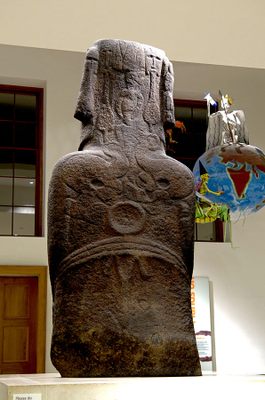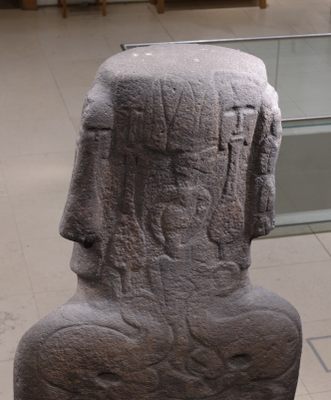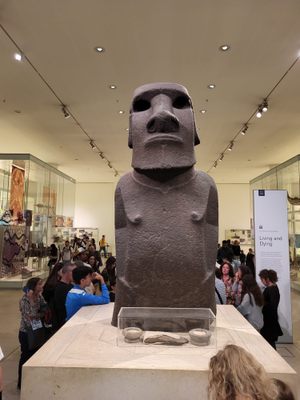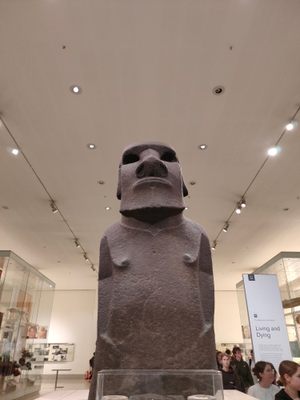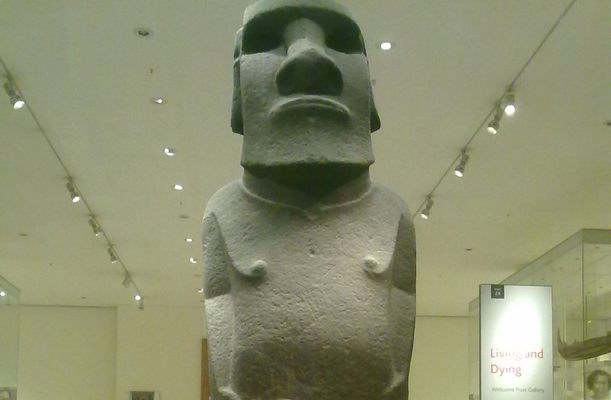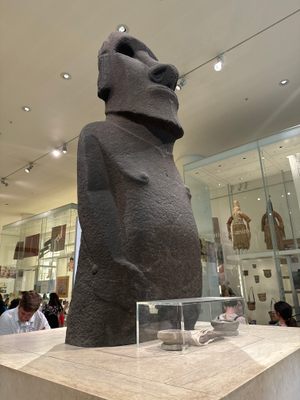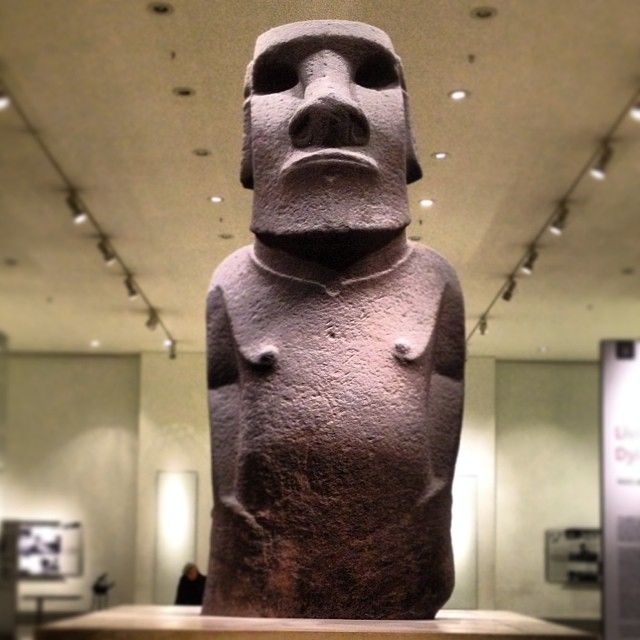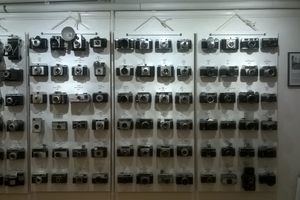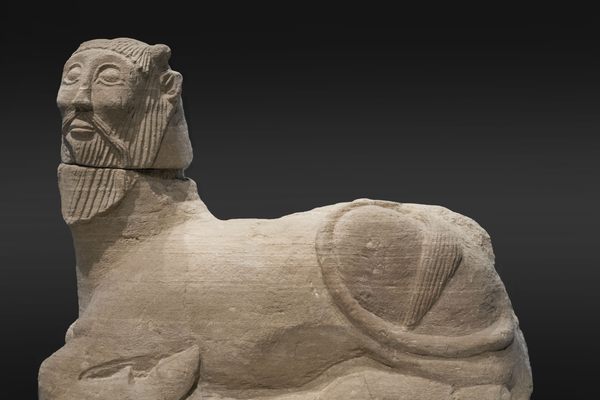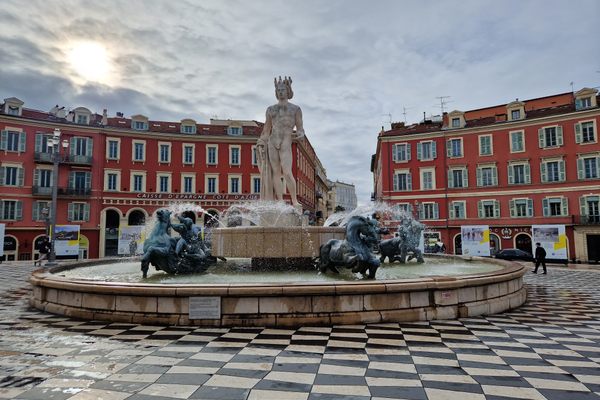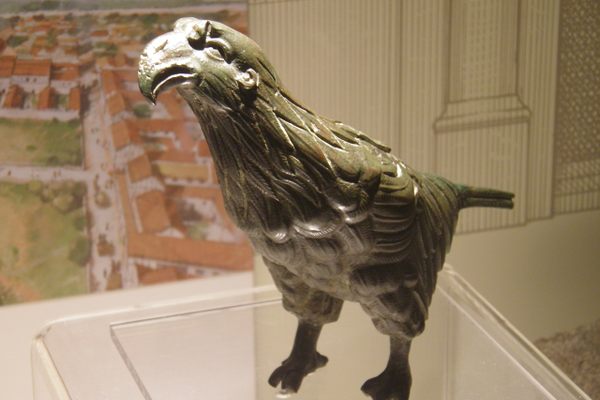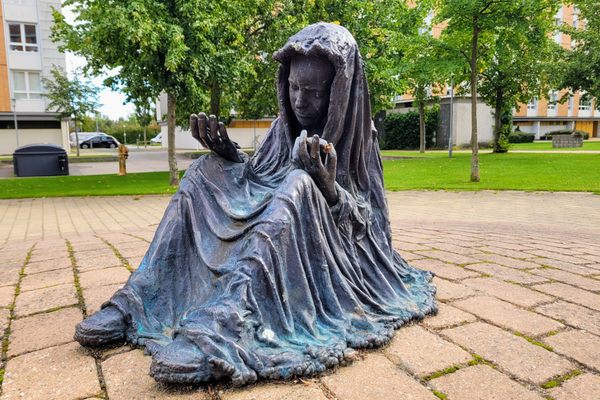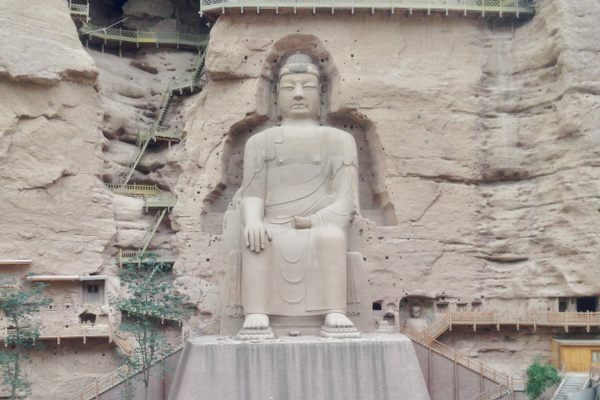About
This lonely moai statue in London was originally located inside a dwelling in the ceremonial village of Orongo on Rapa Nui, aka Easter Island. The exact age is unknown, but it's widely believed to have been built between 1000 and 1600. Natives later gave it the name "Hoa Hakananai'a," meaning lost or stolen friend, because it was stolen from the island by British explorers in 1868.
Sculpted in basalt, the statue is a typical Easter Island stone moai, carved with a prominent nose, brow and chin, nipples, and long ears, with its hands touching its protruding stomach. There is a maro or ritual belt on its back, and his smooth head could originally have supported a pukao, a cylindrical, hat-like stone that is believed to represent hair tied in a top-knot. The body is covered with petroglyphs added after the statue was made, such as two-faced tangata maru, or birdmen; a sooty tern called manutara; and two ceremonial paddles, or ao. Other carvings are still being studied.
Following its 19th-century journey to England, the Moai was donated by Queen Victoria to the British Museum in London, where it has been displayed since 1869. Yet the Chilean government still asserts ownership of the ancient statue. Some Rapa Nui indigenous groups have proposed the United Kingdom build a replica of the statue and return the original monument to the island. However, the British government opposes this idea, arguing that there is no conservation plan for the moai on Easter Island.
Related Tags
Know Before You Go
The statue is located in the in the Wellcome Gallery in British Museum. The museum is situated in London's Bloomsbury. It is easily accessible by tube, at Tottenham Court Road (lines Central and Northern) and Holborn (lines Central and Piccadilly).
Community Contributors
Added By
Published
December 3, 2018


